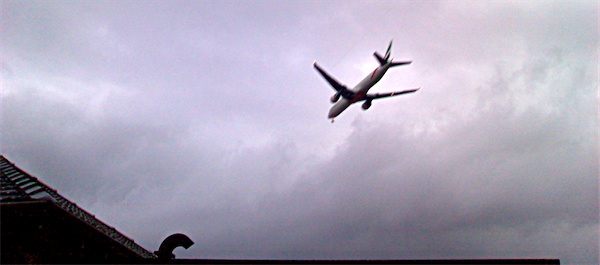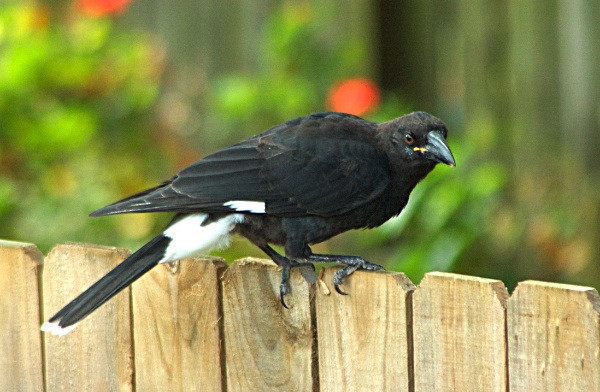
I’m in Crikey again today, this time with a piece called The Internet’s feral goldfish get it very wrong. It’s free for all to read and, yes, it introduces the world to my “feral goldfish” concept. Vive les poissons rouges sauvages!

Word-whore. I write 'em. I talk 'em. Information, politics, media, and the cybers. I drink. I use bad words. All publication is a political act. All communication is propaganda. All art is pornography. All business is personal. All hail Eris! Vive les poissons rouges sauvages!

I’m in Crikey again today, this time with a piece called The Internet’s feral goldfish get it very wrong. It’s free for all to read and, yes, it introduces the world to my “feral goldfish” concept. Vive les poissons rouges sauvages!

The story I wrote for Crikey today has ended up being their lead item, under the completely not provocative at all no Sir headline, Telstra holds back broadband speeds. Again. And it’s free to read.
Confused by Telstra’s rejected low-cal bid for the National Broadband Network? Let’s stir some new jargon into the stew: “DOCSIS 3” and “dark fibre”. Suddenly Telstra’s strategy makes sense — for Telstra — but it delays the rollout of high-speed broadband even further. Again.
The comments have started to come in, starting off with: “Can you please get someone with a real name to write the technology articles?” Poor thing.

Our home in Enmore is under the approach path to Runway 16R at Sydney Airport. We can cope (just) with the noise, but the electronic interference annoys the shit out of us. Time to fix that. Here’s an email I just entered into their website contact form.
Dear Sydney Airport,
We live in Enmore. When you turn on your electronic stuff to help the heavy jets land on Runway 16R, it often knocks out our Wi-Fi network. (It also overloads the pre-amp of our digital TV receiver, but since we’ve pretty much given up on broadcast TV this is less of a concern.) We can even predict the imminent arrival of a heavy because the network goes down about 15 or 20 seconds before we hear the approaching aircraft.
This happens on two different
801.11g802.11g frequencies, two different brand wireless access points, and on whichever computers we’re using. Your comms or navaids, or maybe the aircraft themselves, can also interrupt a Telstra Next G data connection, so even switching to our alternate data link is problematic.I understand that, for obvious practical reasons, we can’t shut down the airport. So I assume you’ll be sending someone around to resolve this interference with our legitimate use of the radio spectrum?
The disruption has of course been more frequent since the work on the cross runway has increased the daytime traffic over our home. Again, I understand that this work needs to be done.
However, like someone doing noisy renovations or holding a noisy but perfectly legitimate party, the polite, neighbourly thing would be something a bit better than sending us generic corporate propaganda. The polite, neighbourly thing would be to make good somehow. Give us the keys to your holiday shack while work’s in progress. Invite us over to see the new family room once it’s done. Send around a slab of beer and some grilled chicken breast fillets.
Or, just fix the problems you’re causing.
I look forward to your response. Like this email, it’ll be posted at stilgherrian.com. If it’s a bunch of legal or PR jargon which fails to acknowledge that the problem even exists, we’ll laugh.
Regards,
Stilgherrian
I’ll keep you posted if and when they respond.
Stilgherrian’s massive megamix January melange of links from 29 December 2008 through to 09 January 2009.
There’s so many links here that for the blog version I’ll put them all “below the fold”. Happy reading!
Continue reading “Links for 29 December 2008 through 09 January 2009”

[This article was first published in Crikey on Monday 5 January 2009, and the headline is theirs. Here it is for those folks too cheap-arsed to subscribe. I’ll re-post my other recent Crikey material soon.]
The biggest criticism of the Rudd government’s plan to centrally censor the internet — apart from it being ill-defined, secretive, a potential human rights abuse, a great way to screw up broadband speeds, poorly planned, way behind schedule and tackling the problem of child sexual abuse in completely the wrong way — is that it won’t work. As Crikey has reported several times before. None of the filters tested in the first half of 2008 could touch peer-to-peer (P2P) networks like BitTorrent, which is where The Bad Stuff lives.
Just before Christmas, Senator Conroy tackled that last bit by declaring in a single sentence on his new blog: “Technology that filters peer-to-peer and BitTorrent traffic does exist and it is anticipated that the effectiveness of this will be tested in the live pilot trial.” If so, it’s news to the ISPs who signed up. But then they haven’t been given official notification yet, and the trials were meant to start before Christmas. Ahem.
BitTorrent is easy to understand, provided you skip the brain-imploding technical details. Instead of everyone downloading the same big media file from a central server, causing congestion, the file is split up into lots of little pieces. As soon as you’ve download one random piece, your computer becomes a server, swapping the pieces you already have for the missing pieces downloaded by other users — your peers. Automatically. Eventually everyone gets all of the pieces, with the work shared amongst all the participants.
BitTorrent is incredibly efficient. As we reported in March, Norway’s national broadcaster NRK used BitTorrent to distribute a full HD TV program to 80,000 people for just US$350 in bandwidth and storage charges.
Yesterday [Sunday], Crikey showed NRK project manager Eirik Solheim reports of Conroy’s plan.
“Wow!” he said. “A minister that is actively working to limit your country’s ability to distribute information and compete globally… If he plans to block BitTorrent traffic in general that would be a serious limitation to people’s ability to distribute content, creativity, ideas and information.”
Continue reading “Conroy attacks BitTorrent: Ruins Australia online”

A family of pied currawongs lives next door. Beautiful, smart birds. Recently we’ve been leaving food out for them, and they’re happy to steal a few bites while keeping a wary eye for the cats.
Today one of the parents brought two of the juveniles with it. While I didn’t get the camera in time to snap the family portrait, I did sneak this picture of one of the juveniles on the neighbour’s fence.